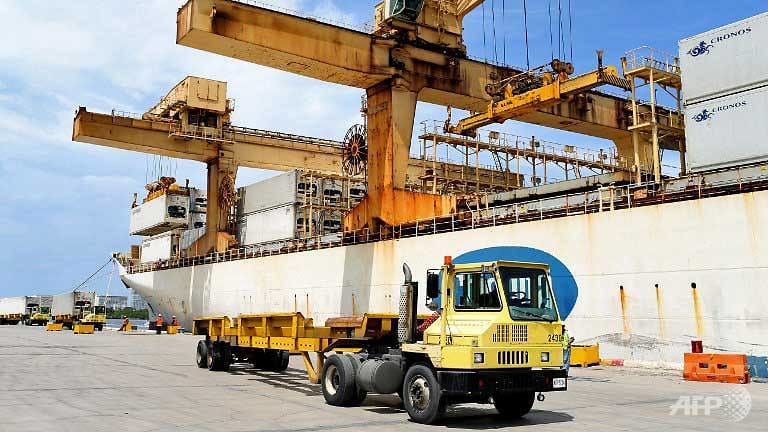With limited options, Beijing could be pushing New Delhi to a closer Western embrace, says Yogesh Joshi.
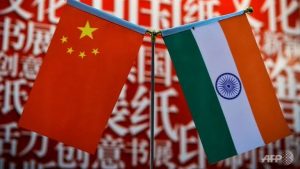
Tensions have been rising on the border between India and China in recent weeks
SINGAPORE: India and China share a legally undemarcated frontier along the high Himalayas.
After the 1962 Sino-Indian War, China and India settled with perceptions of a boundary which they called the Line of Actual Control (LAC). The Indian and Chinese versions of the LAC, however, overlap.
Transgressions are a regular feature of this boundary dispute as are skirmishes among troops tasked to enforce these claims.
MOST VIOLENT SKIRMISHES IN 45 YEARS
Since 1975, not a single shot has been fired along the Sino-Indian border. Neither has there been casualties under any physical contact with the adversary.
Even when Indian and Chinese forces involved themselves in several stand-off-like situations over these past 45 years, the two sides abjured the use of force and avoided deadly combat.
That all changed on Monday (Jun 15) night when the Indian Army and the People’s Liberation Army (PLA) soldiers clashed in Galwan Valley, along the Galwan River in Ladakh – India’s northern-most frontier with China.
The midnight melee left 20 Indian soldiers dead with an unconfirmed number of casualties suffered by the PLA.
The world’s two largest armies did not fire a single shot. Instead, they fought with almost neanderthal tools such as stones, wire studded clubs, batons and fists to inflict brutal punishment on each other.
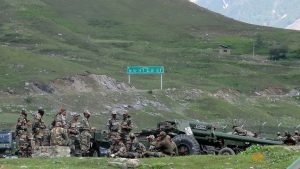
Indian army soldiers rest next to artillery guns at a makeshift transit camp before heading to Ladakh, near Baltal, southeast of Srinagar, June 16, 2020.
What happened on Jun 15 was not only odious but also wholly unexpected.
DISENGAGEMENT AND DE-ESCALATION
The clash occurred during the disengagement process agreed in the wake of high-level political negotiations between New Delhi and Beijing.
Beginning in late April, the PLA amassed substantial forces at several critical locations along the Sino-Indian border under the garb of high-altitude exercises in Tibet.
It also began constructing permanent bunkers in remote outposts at several locations along the LAC, which India considers its territory.
With alarm bells ringing in New Delhi, the Indian Army mobilised and confronted the PLA, mirroring deployments along the frontier.
However, India and China have devised several confidence building measures to address such contingencies, both at military and political class levels.
The political dialogue finally resulted in a thaw on Jun 9, as both sides agreed to disengage and establish the status quo ante. Such disengagement is not unprecedented.
Since 2013, India and China have resolved similar situations on at least three separate occasions.
Moreover, the terms of engagement agreed under the Peace and Tranquillity Agreement of 1993 and the 1996 Boundary agreement prohibit the use of deadly force in settling the boundary dispute.
BREACH OF PAST AGREEMENTS
It was the breach of sanctity and confidence, both in the written agreements and the historical practice of peaceful disengagement, that rendered the incident at Galwan so shocking for the Indian leadership.
The killing of Indian soldiers has riled up anti-Chinese sentiment, both in the military and the political class.
Indian Prime Minister Narendra Modi has warned China of a “befitting reply” and assured the Indian Army that the sacrifices made “will not go in vain.”
The Indian External Affairs Minister S Jaishankar has told his Chinese counterpart that Beijing was “directly responsible for the resulting violence and casualties” as PLA’s actions in Galwan valley were both “premeditated and planned.”
Confidence in Beijing’s intentions and sincerity is at its lowest ebb.
The sentiment that “China has broken all agreements signed with India since 1993,” as former Indian Ambassador to China Gautam Bambawale claimed, is shared widely.
On the other side, China too feels that India contravened the sanctity of their previous agreements. In his call with Jaishankar on Wednesday (Jun 17), Chinese Foreign Minister Wang Yi blamed Indian troops for provoking the current clashes as he said they had breached the LAC and violated their earlier consensus to de-escalate tensions in the regions.
“India should not make wrong calculations on the situation and not underestimate China’s determination to maintain its territorial integrity,” he reportedly said.
CHANGING THE TERMS OF ENGAGEMENT
The Indian military is also rethinking its options.
The Indian Army may have to revise its decades-old rules of engagement on the Sino-Indian border. Until now, its standard operating procedures outlined no use of deadly force against PLA troops but from hence on, self-defence and the uncertainty of Chinese action may entail a shooting match.
Escalation may not be limited to ground forces, however. Increased PLA air activity along the frontier may lead to engagement between the two air forces. In May, the Indian Air Force scrambled fighter jets to ward-off Chinese helicopters transgressing into Indian territory.
The escalation dynamics may also spread to the Indian Ocean. The Indian Navy believes that it has operational superiority over the Chinese Navy in the Indian Ocean region and will look to exert this superiority in future conflicts.
The current crisis has therefore not only transformed the nature of the Sino-Indian border dispute but also the character of military competition between the two Asian giants.
THE DAMAGE MAY NOT BE UNDONE
The consequences of Galwan will reverberate far and wide. The crisis could not have come at a more challenging period for Modi.
Already struggling with COVID-19 and an economic recession, the overwhelming feeling in India is that Beijing has stabbed it in the back.
The perception in New Delhi, as seen by Jaishankar’s comments, is that the unlawful occupation of territories along the contested border – a replication of its salami-slicing tactics employed in the South China Sea – is condoned at the highest level in Beijing,
The view that follows is that the bloodbath in Galwan is therefore not an accident engendered by passions of local PLA commanders but a forceful assertion of China’s territorial revanchism under Xi Jinping.
The post-clash rhetoric from Beijing has been equally threatening.
The PLA is continuously aggrandising forces in Tibet, and its military and political leaders have threatened India with devastating consequences if any attempt is made to dislodge PLA forces from occupied territories.
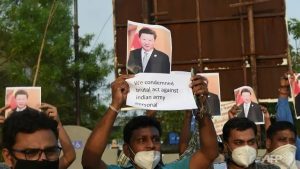
Protests in India against China following deadly clashes between the nuclear-armed neighbours in a disputed Himalayan region.
It will also mark the end of Modi’s personal diplomacy with Xi. After the 2017 Doklam crisis between both countries, Modi had initiated a high-level informal summit with Xi. The process, which began in Wuhan, is now practically dead.
The forthcoming Russia-India-China Trilateral dialogue is only the first casualty of the crisis. In all probability, diplomatic activities to celebrate 70 years of Sino-Indian bilateral relations this year will meet a similar fate.
INDIA’S OPTIONS ARE LIMITED
New Delhi’s options are limited. Military escalation may signal India’s resolve, but the gaps in military capability and power vis-à-vis China are formidable.
In the short-term, India will however will hold fort along the border.
The asymmetric economic interdependence between the two can provide India with some levers to pull.
On Wednesday (Jun 17), the Indian government cancelled 4G equipment contracts with Chinese telecommunications company ZTE Corporation. Huawei’s aim of getting a strong foothold in the Indian market is also hampered now.
The boycott of Chinese goods has started gaining traction among the Indian public.
If Chinese strategists feared India’s gradual alignment with the West before this, Galwan would galvanise both political and public opinion in favour of deeper military and diplomatic ties with like-minded countries such as the US, Japan, and Australia.
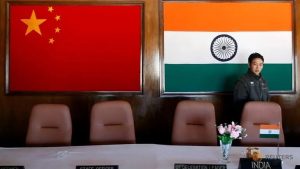
FILE PHOTO: A man walks inside a conference room used for meetings between military commanders of China and India, at the Indian side of the Indo-China border at Bumla, in the northeastern Indian state of Arunachal Pradesh, November 11, 2009.
Under the impact of Chinese power and Xi’s revisionism, as former Indian diplomat Vijay Gokhle wrote in the New York Times recently: “The world needs balance — at the moment, no country other than the United States has the means to ensure it.”
For far too long, New Delhi has maintained a preference for strategic autonomy rather than strategic alignment with the West. Chinese actions have more or less forced India’s hands.

